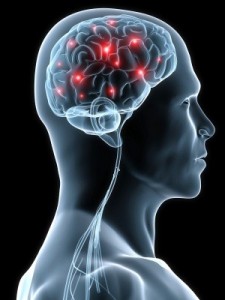Why our brains weigh 1.3 kilograms, have ~100 billion neurons, consume 20% of the oxygen we breathe
 Teamwork Builds Big Brains (Science Now):
Teamwork Builds Big Brains (Science Now):
— “The average adult human’s brain weighs about 1.3 kilograms, has 100 billion or so neurons, and sucks up 20% of the oxygen we breathe. It’s much bigger than an animal our size needs. According to a new computer model, the brains of humans and related primates are so large because we evolved to be social creatures.”
— “The idea behind the so-called social intelligence hypothesis is that we need pretty complex computers in our skulls to keep track of all the complex relationships we have with each other.”
— “… but points out that this hypothesis doesn’t explain all animal brainpower. New Caledonian crows, for example, are impressive thinkers, but they aren’t social. He thinks that those birds have evolved intelligence to deal with certain hard-to-get foods. That need may also have contributed to the evolution of intelligence in apes, he says.”
Study: Cooperation and the evolution of intelligence (Proceedings of the Royal Society)
- Abstract: The high levels of intelligence seen in humans, other primates, certain cetaceans and birds remain a major puzzle for evolutionary biologists, anthropologists and psychologists. It has long been held that social interactions provide the selection pressures necessary for the evolution of advanced cognitive abilities (the ‘social intelligence hypothesis’), and in recent years decision-making in the context of cooperative social interactions has been conjectured to be of particular importance. Here we use an artificial neural network model to show that selection for efficient decision-making in cooperative dilemmas can give rise to selection pressures for greater cognitive abilities, and that intelligent strategies can themselves select for greater intelligence, leading to a Machiavellian arms race. Our results provide mechanistic support for the social intelligence hypothesis, highlight the potential importance of cooperative behaviour in the evolution of intelligence and may help us to explain the distribution of cooperation with intelligence across taxa.


